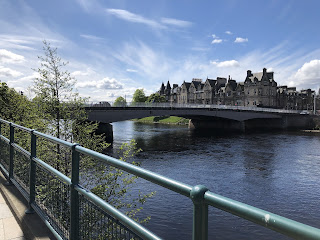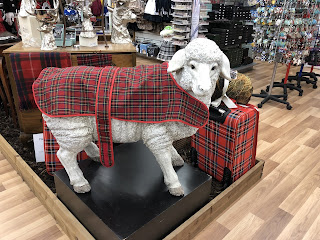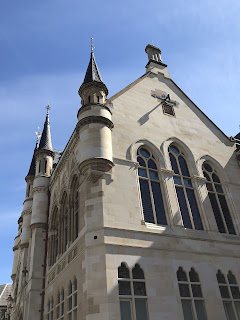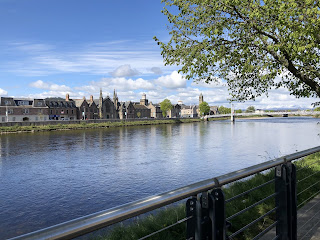Cruising in Scotland— today: the Scottish Highlands.
During the past sea day, we cruised around the top of Scotland, passing The Orkney Islands, and headed east to the Highlands Of Scotland. The Highlands, in the far north of Scotland, is made up of six smaller regions: including the North Highlands, Inverness, and Loch Ness. The highlands are renowned for their dramatic natural scenery, such as emerald green hills, sparkling lochs, and wild and rugged mountains such as Ben Nevis and Glen Coe.
Our ship docked in the city of Invergordon which is located approximately 45 minutes from Inverness. Inverness is considered to be the capital of the Highlands of Scotland.
Inverness has an oceanic climate; it’s coastal position means temperatures are milder that might be expected for its northerly location. Summer highs average in the 50s. Inverness is the northernmost city in the United Kingdom and dates back to the six century.
Cruise passengers arriving into Invergordon can take bus number 25x or a train into Inverness. I took the 10:07 AM 25 express bus into Inverness. Along the way, we drove through several quaint rural villages, saw spectacular scenery with snow-capped mountains in the background, and enjoyed meeting a few of the locals.
Facts about the Scottish Highlands and Scotland in general.
Scotland’s most legendary resident can be found in the freshwater lake of Loch Ness. “Nessie” is the legendary creature that has allegedly been cited multiple times dating back to the six century. Of course, legend is the keyword there. In 1933, an enterprising Inverness journalist reported an odd sighting in the lake. The legend rapidly grew, and today individuals still scan the dark waters searching for Nessie. Nessie is a mythical Monster that attracts thousands of tourists each year. There is even a Loch Ness monster exhibition center, a visitor center that explores the facts and the fakes, the photographs, the unexplained sonar contacts, and the sincere testimony of eyewitnesses. They warn you that you have to make up your own mind on Nessie. All that’s really known is that Loch Ness’s huge volume of water has a warming affect on the local weather, making the lake conducive to mirages in still, warm conditions. These are often the circumstances in which the monster appears.
Several famous castles dot the landscape of the Highlands of Scotland. Some are the Cawdor castle made famous in Shakespeare’s Macbeth, Dunrobin castle, the largest house in Northern Highlands with 189 rooms; and the Castle of Mey, renamed by the late queen mother who purchased it in 1952 and used it as a vacation home until her death in 2002.
Culloden Moor is the famous site of the 1746 Battle of Culloden when the British troops defeated Bonnie Prince Charlie and the Highland clans. This was the last Scottish—British battle.
Bagpipes play a significant role in the heritage of the Highlands. Inverness is an important place for those who play or love the distinctive tones of the bagpipes. Each summer, the city hosts “the northern meeting”, a prestigious bagpipe competition that has been held since 1788.
The Scottish national flag – – a white X on a blue background – – is known as the Saltire or Saint Andrews cross. Dating from the ninth century, it is the oldest national flag still in use.
Scottish Gaelic still survives in the Highlands, both in it’s poetic and oral traditions, and in the every day speech of some of the native Highland folk.
Inverness was often the focal point of clashes between Highland chiefs, and the Crown. Throughout it’s past, the city was burned and ravaged by the Highland clans competing for power in the region. Many of the traditional Scottish events take place here each summer, including the Highland Games and the sheepdog trials.
The forecast for today is a high of 47° and a low of 39°.
















































